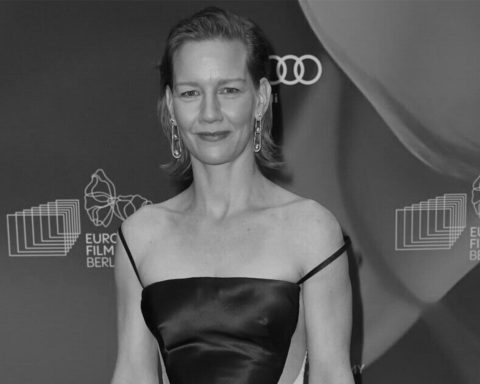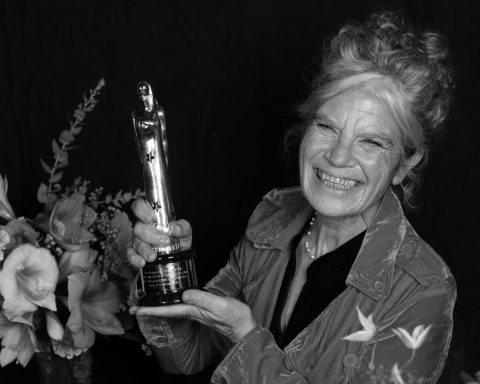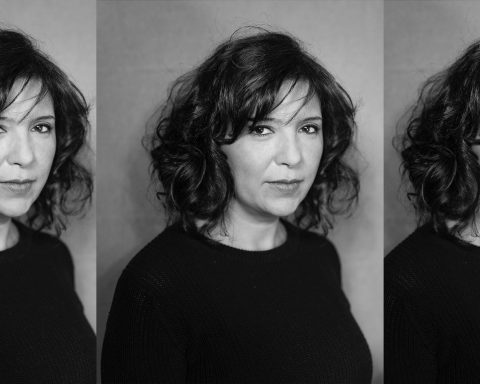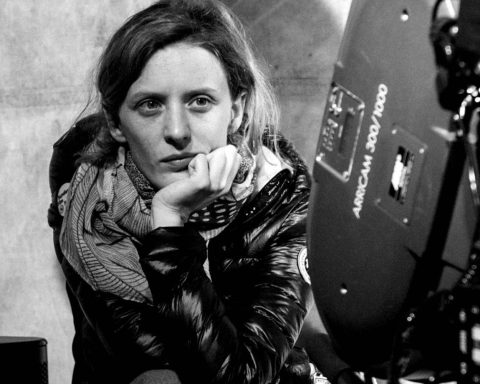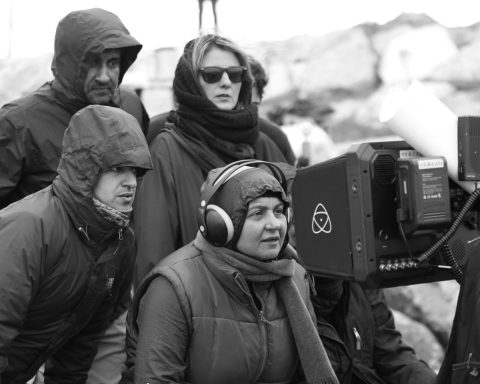Award-winning documentary filmmaker Dawn Porter’s work has appeared on HBO, PBS, Discovery, and Netflix among others. She has been commissioned to create films for the Center for Investigative Reporting, “Time” and “Essence” Magazines, “The New York Times” Op Docs, and Amazon. She directed and produced “Spies of Mississippi,” a critically-acclaimed historical documentary that was part of the Independent Lens series on PBS, “Rise: The Promise of My Brother’s Keeper,” a film for The Discovery Channel chronicling President Obama’s program to help young men of color succeed and the acclaimed four-hour Netflix original series “Bobby Kennedy for President,” which was released in 2018 and premiered at the Tribeca Film Festival. Her 2013 documentary “Gideon’s Army” premiered on HBO and won the Best Editing at the Sundance Film Festival. The film was nominated for an Independent Spirit Award and an Emmy, and is part of the U.S. Department of State’s American Film Showcase. Her film “Trapped,” which explored laws regulating abortion clinics in the South won the special jury social-impact prize at the 2016 Sundance Film Festival, in addition to a Peabody and numerous other awards. Dawn’s current projects include the documentary “Vernon Jordan: Make It Plain,” that explores Vernon Jordan’s rise from the segregated South to become one of the most influential African American thought leaders in America and “John Lewis: Good Trouble” for CNN Films, which explores late Congressman John Lewis’ pivotal role in the Civil Rights movement and decades of political and social activism on important issues including voting rights, immigration laws, and much more.
But Tara Karajica talks to Dawn Porter about her latest documentary, “The Way I See It,” about photojournalist Pete Souza, who served as Chief Official White House photographer for President Barack Obama and previously as an Official White House photographer for President Ronald Reagan, that played at this year’s Toronto International Film Festival as well as women in film today and her exciting new project.
It seems to me to me that you are fascinated by politics as there’s a lot of it in your films. How did you get into documentary filmmaking?
Dawn Porter: I’m a lawyer and I worked at a law firm for five years and then I went to work for a news network. And, after a while, I just felt like I wasn’t seeing stories that I really related to and I thought: “I could do this!” And so, I went to a lot of conferences and film festivals and found a story that I wanted to work on that was about these young public defenders working in the South – and I slowly started getting grants to make that film. So, I kind of came to it later, after I was forty, but it just really suited me. I think that when you’re a lawyer, you’re trained to ask a lot of questions and that is very similar in films; your curiosity pushes you. My father was a photographer and I was a photographer and I had that love of expressing myself visually, so the two just came together so well. I lived in Washington DC for ten years and being interested in political issues kind of came from that – how do we address these things so difficult for so many people? So, you’re right, I’m really interested in the personal part of the political.
I understand that Laura Dern is one of the producers of The Way I See It. How did you get on board the film and how did it come about?
D.P.: Actually, it was her producing partner, Jayme Lemons’, and her idea. Pete [Souza] does a one-man show and Jayme had seen it and brought it to Laura, so they, along with their other partner, Evan Hayes, contacted me. That was cool! She is a down-to-earth person. She really cares about politics and fairness. Also, because she’s an artist, she really was interested in helping me find the way to this story the way that wanted to do it. So, I really, really loved working with her. She’s such a positive person and she’s so encouraging. She’s as nice as you think she is! She’s just fun to be around!
I can imagine that! In the film, what struck me is that there is a lot of “Obama nostalgia” and how you show what Trump isn’t and what he will never be. In a way, you gracefully give your stance on the matter, but also your political views.
D.P.: We did a number of different versions, where in one of them, we had some of Trump’s statements and then Pete’s commentary and it was too dark! It was just too depressing. At some point, people were like: “Let’s just keep him out of it as much as possible.” It still speaks for itself. The film obviously has pictures of President Obama, but also of President Reagan, so the idea is: Trump is the odd man out. He is the one who’s not normal. This isn’t as much political as it is basic human decency. Pete says it a lot – he would not have done the books and he probably wouldn’t have done this film if Mitt Romney was President or another Bush, or somebody like that. His personality, lack of work ethic and lack of empathy are so out of bounds from anything we’ve ever seen that we wanted to show it. It’s not as much: “Obama’s great” as it is: “Everybody else is what you should see in a President.” People who put the country first, not their own personal power first. That is what is so frightening to me about this President.
I find that the film’s heart and soul is Pete’s relationship with President Obama.
D.P.: Yes, they were together so much. Pete’s used to covering subjects, but this is a different kind of work environment, where you see somebody overtime everyday, so he could know when the President was frustrated, when something big was happening, and I think he got a real respect for how many crucial issues come to the President, and for that reason, he was like: “The issues that are coming are so important. You need somebody at their best in order to be making these decisions.” And, that is when he kind of took a turn in his personality, saying after he left the White House he couldn’t just stand by. A lot of people were horrified by Trump, but Pete was really horrified, knowing what it’s like behind-the-scenes and that’s why he decided to speak out. At first, he started kind of humorous, picking light and then it just felt progressively more serious as the issues got more serious. We have 200,000 people that have died in this country, and now we find out that the President knew and was misleading the public about the danger of this virus. It’s astounding! And, I think we all need to continuously be shocked by this and we’re getting numb and we need to not be numb.
Of course! In terms of the progression of Pete’s political views – when he was a photographer in the Reagan administration, he didn’t really care about politics; he respected Reagan and saw him as a decent President even if he didn’t agree with his policies at times, but then, with President Obama, his political views evolved and he became very vocal and very political.
D.P.: I think that’s right! And, I think it kind of surprised even him. I think he was really trying to be the way he had always been – just a journalist, watching, observing, documenting… And then, I think, spending so much time with President Obama and being in all those meetings and listening to what was happening in those meetings, as he says, he couldn’t help but be affected by listening to what people were debating and the decisions they were making. Something Pete said has always stuck with me: “No easy questions get to the President. It’s only the hardest ones. The easy ones, somebody else can make. It’s the hardest questions with no easy answers.” And, that’s what we count on our President to lead us through – that decision-making process – and if you don’t have someone who’s capable of doing that, it’s really dangerous.
I like how you use filmed footage to contextualize some of Pete’s shots. You don’t give us just the shots – sometimes if it’s a speech or if it’s a public gathering, you have the footage to back and explain a shot in particular.
D.P.: That was really fun! And, we planned to get more, but the pandemic meant that the archives were not open, so there’s a lot more behind-the-scenes footage that we would’ve used. But I think part of using that footage is showing how the pictures really do tell a story and how they allow you to just stop and focus on something. I just really appreciated it and it also showed how much Pete was really paying attention to get just that right image that captures the moment. That’s really cool!
There’s not a lot of Pete’s personal life in the film. His wife is a little bit in there as well as the story of their wedding at the White House, which is again tied into his relationship with President Obama. Was it a forbidden subject?
P.D.: I wouldn’t say it was forbidden, but I would say he’s a very private person and he has also been subject to death threats, so for his family’s sake, he really wanted to keep as much of his life as private as possible. You get a little sense of him in his house. But we live in a crazy world and I think also being in the White House and seeing the security breaches, it made him a little bit worried about giving too much information because people have called his house, people have done crazy things and he wanted to make sure his family was safe. So, we respected that.
I like the use of music in the film. It’s always very suggestive and there’s Bruce Springsteen’s song “High Hopes” among others, and putting it at the beginning, I think, makes for a very powerful opening. Can you talk about the choice of music?
D.P.: Pete is a big music fan and he would give us playlists of artists that he liked and we all like Bruce Springsteen! I like that song in particular because you don’t necessarily know it’s Bruce Springsteen unless you know where to pay attention, so good for you! It kind of had a double meaning: Bruce Springsteen is the author of “Born in the USA” and an artist Pete loves, but for him to kick us in, that’s kind of the point of the movie – none of us have given up hoping for America to be the best; its best, not the best in the world, but whatever the best it can be as a country and I think that that is different. We’re not saying America is better than any other country. America is flawed like every country, but you hope it will live up to the ideals we have for it and that’s why I wanted to start the movie with that song.
What was Pete’s reaction to the film and did President Obama see the film? If so, what was his reaction?
D.P.: Pete loved it, which was great because he’s very picky and his wife really loved it and said it really captured him. President Obama will see the movie – he hasn’t seen it yet – so we’re super excited for it!
Do you think it will have an impact now that people have to vote in a few months? I see it as a graceful way of nudging people and telling them to vote…
D.P.: That has always been our hope. Three and a half years into this time period, memories fade and when they see the movie, they’ll remember when you didn’t have to worry about your President doing something completely crazy. You might disagree, but it’s like “I disagree with you wearing a red sweater versus a blue sweater.” It’s like “I don’t like that, but it’s not going to get me killed.” We really pushed hard to get it out before the election so that people who are listening and paying attention would possibly be moved.
Do you agree with the question that Pete was asked about photojournalists being included in History-making?
D.P.: I think that’s right. I think when we think of some of the most important moments of our American history and History around the world – the photo of the protestor in Beijing, the photo of Reverend Dr. Martin Luther King, the photo of John Lewis on a bridge… You can read something and understand the context and facts, but when you see something, it just strikes you immediately. And so, photos really help us picture the important issues and I think that’s how Pete approaches his job. I think that’s the kind of gift he’s given to all of us about the eight years of the Obama presidency and the years that he was in the Reagan White House.
There has been so much talk about women in film in the past almost three years. What is your opinion on the matter? How is it in the USA now?
D.P.: I think women have made tremendous strides and are being really assertive and aggressive about going after the stories that they want. I think there’s a tremendous amount of talent. Documentary’s a little different than feature film. Feature film is still just horrific in terms of the numbers of women that are given big budgets. But in documentary, we’ve always been kind of 50/50 and you see more and more women in documentary getting even bigger budgets, getting more and more projects and I think that’s great. I also think once you show you can do it with a bigger budget and with a bigger topic, it opens the door for other people and something I’m really proud of is that this film’s distributed by Focus Features, a movie studio. I just did a film, John Lewis: Good Trouble, that’s distributed by Magnolia Pictures, so I think people are evaluating people for their storytelling ability. There are so many women who are fabulous storytellers and we kind of root for each other – not that we don’t like our guys! There’s Nadia Hallgren telling the Becoming story for Mrs. Obama and there are so many newer voices coming out and it’s really exciting!
Apart from Nadia, do you have any other favorite female filmmaker and a favorite film by a female filmmaker?
D.P.: I really love Garrett Bradley and what she did with her movie, Time. It’s really, really beautiful, very confident filmmaking, really assured. I love Heidi Ewing and Rachel Grady who are spectacular filmmakers. Liz Garbus… The list is so long. I also like that Heidi and Liz have branched into narrative filmmaking. They both each this year had very well-received scripted films and I think it speaks to the fact that documentary people are really good at listening and drawing out emotion and that’s also what you want in scripted features, getting actors to do it instead of real people, so I think I’m really looking forward to seeing what’s coming next from all of those filmmakers.
I know it’s a crazy time and we don’t know what will happen in the future, but do you have anything in the pipeline that you’re working on for future better times?
D.P.: Yes! I am working on a six-part series for Apple TV+ with Oprah Winfrey and Prince Harry, so I’m really excited about that. We tell some really beautiful stories about people who have experienced mental health challenges, who are overcoming them, who are right in the middle of them. It’s a really big, bold effort, so I’m working hard on that.
This interview was conducted at the 2020 (virtual) Toronto International Film Festival.
Photo credit: Focus Features.






